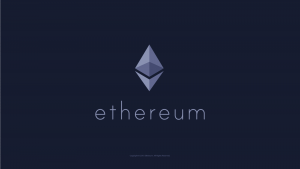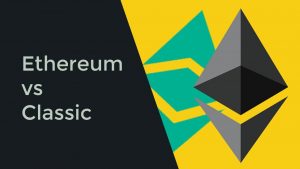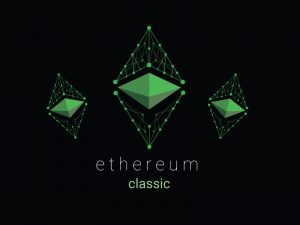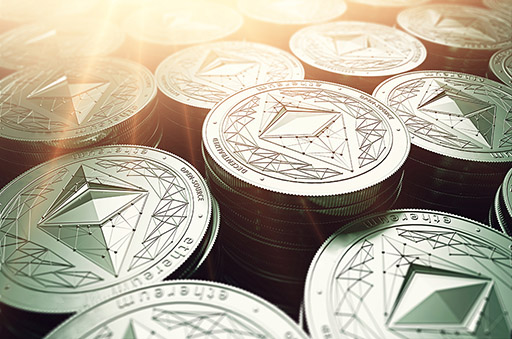Table of Contents
What is Ethereum?

You may be well familiar with Bitcoin as the Blockchain’s most commonly used cryptocurrency. But in the course of your transactions, you definitely have encountered a similarly popular application traders are using these days – Ethereum.
Ethereum is an open software platform based on blockchain technology that enables developers to build and deploy decentralized applications.
But is Ethereum similar to Bitcoin? Let’s take a look at their similarity first. Like Bitcoin, Ethereum is a distributed public blockchain network. Its main difference with Bitcoin is its purpose and capability. Bitcoin offers one particular application of blockchain technology – which is a peer to peer electronic cash system that allows online Bitcoin payments to be processed.
While the Bitcoin blockchain is utilized to keep track of ownership of the cryptocurrencies, the Ethereum blockchain is more focused on running the programming code of any decentralized application. Instead of mining for bitcoin, miners work to earn Ether – a type of crypto token that fuels the network. Aside from this function, Ether is also used by application developers to pay for transaction fees and services on the Ethereum network.
Uses of Ethereum

All services that are centralized can be decentralized using Ethereum. Imagine the possibilities for all intermediary services that exist across hundreds of different industries such as bank loans, title registries, voting systems, regulatory compliances etc.
Ethereum may also be utilized to build Decentralized Autonomous Organizations (DAO) which is a fully autonomous, decentralized organization with an objective to provide a new decentralized business model for organizing both commercial and non-profit enterprises. It was conceptualized with a seed idea of the possibility that bitcoin can do away with financial middlemen making it possible for companies and other institution to operate one day without hierarchical management.
DAO is run by programming code, on a collection of smart contracts which are written on the Ethereum blcokchain. Its code is designed to replace the rules and structure of a traditional organization, eliminating the need for people and centralized control.
DAOs are owned by everyone who purchases tokens – each token equating to equity shares and ownership, tokens act as contributions that give people their voting rights.
“Ethereum makes the process of creating blockchain applications much easier and efficient than ever before. Instead of having to build an entirely original blockchain for each new application, Ethereum enables the development of potentially thousands of different applications on all one platform.”
How is Ethereum different from Ethereum Classic?

There is a rich history on the origin of Ethereum Classic. Through an Initial Coin Offering (ICO), the DAO crowdfunded over $140 million in Ether value. This is the biggest crowdfund in history at the time which was sent to be locked into a smart contract.
Later on, when the crowdund ended, a hacker has exploited a critical bug in the contract’s code, enabling him to drain the funds from the DAO into another contract under his control.
The developers of Ethereum who are inlvolved in the DAO project were taken aback by the incident. Considering Ethereum was much smaller back then, the DAO held about %14 of all of the Ether in the market and ETH price has been dropping. Due to the way the DAO contract was written, developers of the Ethereum had a month 1 month before the hacker could commence draining out funds.
Their proposed solution was to roll back the whole Ethereum blockchain to the point where the attack occurred whilst changing the code so that the DAO investors would be able to undo their investments and get their currencies back. However, some traders did not like the idea. This is when Ethereum Classic was introduced.
The original objective of Ethereum is to function on an unstoppable code, a system in which code dictates everything and whatever you program into it just runs and nothing can stop it. Such system does not take into account if the code is solid, or behaves as intended; it simply runs as it is. Ethereum Classic uses original code without the rollback and it also has a significant following.
The separation of Ethereum (ETH) and Ethereum Classic (ETC) has been dubbed as the reason for a downtrend in price that lasted close to a year.
Where and How To Buy Ethereum Classic?

-
You first have to get an Ethereum Classic (ETC) Wallet
If you want to make sure that your ETC is safe and secure, then you should invest on a Hardware Wallet. Check out this link to know more about Hardware wallet.
You may also wish to use the multi wallet Coinomi – a wallet that allows multiple types of assets and ETC is one of them. It works well on Android and on iOs. Mist Wallet is also a good option as this is the native software that runs ETH and can also work with ETC.
-
Buy Ethereum Classic
You can select from three main exchanges when buying actual ETC: Poloniex, Kraken and Bitfinex. (check out our cryptocurrency exchanges blog here)
Poloniex allows you to only trade Bitcoins for ETC unlike for Kraken and Bitfinex where you can buy ETC with fiat currency as well as with Bitcoin.
How to Buy ETC thru Poloniex
- Sign up at Poloniex
- Validate your email address through a generated link
- Click on the upper right corner of the page where “Balances” tab is, point it and click on the menu that says “Deposits and Withdrawals”
- Click on “Deposit” at the BTC line. The page will give you a Bitcoin address in order to fund your account.
- Go back to the “Exchange” tab on the upper left side of the page. Use the search bar to look for ETC and click it.
- Fill up the details. (e.g: price you want, denominated in BTC, and the amount you want) The page will show you how much BTC the ETC is going to cost.
- Click on “BUY” button
3. Withdraw your ETC into your wallet
When you’re through buying ETC, make sure to get your coins out of the exchange. This will keep you from any irregularities in the network and to ensure that you have a clean and flawless transaction.

Now, go back to page of the wallet that you chose and get the receiving address. Once you have your ETC address, Click on the page where you will see “Deposit and Withdrawal” tab and select “Withdrawal” on the ETC line.
Paste in the address that the exchange sent you. Input the desired amount and hit the “Withdrawal” button. Remember that some daily and monthly withdrawal limits apply, so if you want to increase your limit, you must verify your identity with your chosen exchange.
There you have it! You are now officially an ETC trader.
Best of luck in your future transactions!

